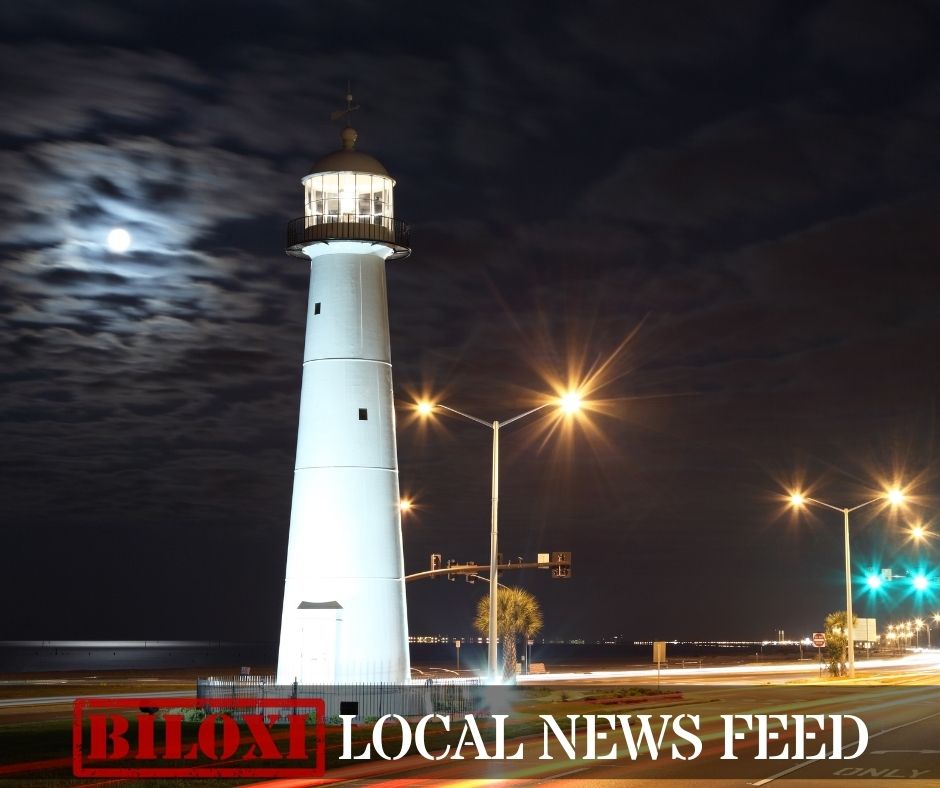News from the South - Alabama News Feed
States, sheriffs puzzle over Trump’s error-filled list of immigration sanctuaries
by Tim Henderson, Alabama Reflector
June 9, 2025
This story originally appeared on Stateline.
A list of 14 states, 298 counties and 200 cities deemed immigration sanctuaries by the Trump administration has disappeared from a government website but continues to hang over the heads of officials who face threats of losing federal funding.
“We were placed on a list with many other sheriffs across the nation for no clear reason and no clear cause,” said Sheriff Charles Blackwood of Orange County, North Carolina, a heavily Democratic county that nevertheless complies with a new state law requiring cooperation with immigration arrests.
“The list is gone. Am I satisfied that it was rectified? Yes. Am I satisfied that it’s over? No,” Blackwood said.
GET THE MORNING HEADLINES.
The list went up May 29. It called out the “cities, counties, and states that are deliberately obstructing the enforcement of federal immigration laws and endangering American citizens.” The White House had already threatened “suspension or termination” of federal funds to them.
Along with counties and cities, the list named the whole states of California, Colorado, Connecticut, Delaware, Illinois, Maryland, Massachusetts, Minnesota, New Jersey, New York, Oregon, Rhode Island, Vermont, Washington and the District of Columbia as “state sanctuary” areas.
We were placed on a list with many other sheriffs across the nation for no clear reason and no clear cause.
– Sheriff Charles Blackwood of Orange County, N.C.
There was immediate reaction from some areas, not only Democratic states and counties with court-tested legal policies of declining cooperation with deportation, but also conservative areas mystified by their inclusion.
“We figure it must be some kind of mix-up. We certainly support our fellow law enforcement agencies,” said James Davel, administrative coordinator for Shawano County, Wisconsin, which was included despite no apparent immigration sanctuary policy. The county voted for President Donald Trump in 2024 by more than 67%.
One possible explanation: The county board passed a resolution in 2021 declaring Shawano a “Second Amendment Sanctuary County” as a sign of “vigorous support of the peoples’ Second Amendment right to keep and bear arms.”
The list disappeared from the U.S. Department of Homeland Security website in a matter of days, after the National Sheriffs’ Association complained that many counties were erroneously included.
“It was quite the debacle,” said sheriffs’ association spokesperson Patrick Royal. “We are working with the administration to resolve as much as we can.”
But Homeland Security Secretary Kristi Noem said in a television appearance that the list would come back and was largely accurate.
“That list is absolutely continuing to be used and it is going to be identifying those cities and those jurisdictions that aren’t honoring law and justice,” Noem said in a Fox News interview June 1.
Courts have so far upheld local laws that limit cooperation with federal immigration arrests. California won a lawsuit on the issue in 2017 under the first Trump administration, and the same federal judge issued an injunction saying federal funds couldn’t be withheld on the basis of immigration cooperation during a new trial on the issue.
The national sheriffs’ association president, Sheriff Kieran Donahue of Canyon County, Idaho, said in a May 31 statement that the list “was created without any input, criteria of compliance, or a mechanism for how to object to the designation.” He said it was “an unfortunate and unnecessary erosion of unity and collaboration with law enforcement.” Canyon County was not on the list, though the city of Boise was.
The pushback from sheriffs was a sign of how seriously flawed the list was, said Colleen Putzel-Kavanaugh, an associate policy analyst at the Migration Policy Institute in Washington, D.C.
“The real problem is, how are they defining sanctuary?” Putzel-Kavanaugh said. “To have pushback from an association that is typically quite supportive of this administration and their agenda points to problems with definition.”
Watauga County, North Carolina, was on the list when it first appeared May 29 but came off before it was taken down. The county’s congressional representative, Republican Virginia Foxx, said in a Facebook post that she intervened.
In the post, Foxx called it “a mistake … made during the Biden administration that resulted in Watauga County being listed incorrectly as a sanctuary county.” She also said that “Watauga County is no longer listed” after she “contacted DHS.”
Jessica Vaughan, director of policy studies at the Center for Immigration Studies, a group favoring less immigration, said her list of sanctuary jurisdictions included Watauga based on a June 2024 report from U.S. Customs and Immigration Enforcement listing it as among hundreds of others as “non-cooperative institutions.”
Vaughan said data she requested from ICE shows some counties in North Carolina were still not complying with all detainers this year through early February, but Watauga is not one of them.
“They should probably come off the list,” she said. “None of those sheriffs has contacted me about reviewing their policies or taking them off the map. I would be happy to do so, and have done so frequently with sheriffs in other states.”
Sheriff Len Hagaman of Watauga County told Stateline via email that he had contacted federal immigration officials and confirmed that his county, which voted Democratic for president last year by a 52% to 46% margin, had a solid record of cooperating with immigration arrests.
Hagaman alluded to an April Facebook post by U.S. Sen. Thom Tillis, a North Carolina Republican, calling out Watauga and eight other North Carolina counties as immigration sanctuaries.
“For several weeks now, I, along with other North Carolina sheriffs have had to endure gross and inaccurate misinformation regarding false allegations,” Hagaman wrote.
Stateline reporter Tim Henderson can be reached at thenderson@stateline.org.
Stateline is part of States Newsroom, a nonprofit news network supported by grants and a coalition of donors as a 501c(3) public charity. Stateline maintains editorial independence. Contact Editor Scott S. Greenberger for questions: info@stateline.org.
Independent Journalism for All
As a nonprofit newsroom, our articles are free for everyone to access. Readers like you make that possible. Can you help sustain our watchdog reporting today?
Alabama Reflector is part of States Newsroom, a nonprofit news network supported by grants and a coalition of donors as a 501c(3) public charity. Alabama Reflector maintains editorial independence. Contact Editor Brian Lyman for questions: info@alabamareflector.com.
The post States, sheriffs puzzle over Trump’s error-filled list of immigration sanctuaries appeared first on alabamareflector.com
Note: The following A.I. based commentary is not part of the original article, reproduced above, but is offered in the hopes that it will promote greater media literacy and critical thinking, by making any potential bias more visible to the reader –Staff Editor.
Political Bias Rating: Center-Left
This article demonstrates a Center-Left bias through its tone and framing, which often casts doubt on the Trump administration’s sanctuary jurisdiction list and highlights voices critical of its accuracy and methodology. While the piece includes statements from both Democratic and Republican figures, as well as immigration-restriction advocates like Jessica Vaughan, the emphasis remains on administrative missteps, law enforcement confusion, and lack of transparency. The article uses more space to question the validity of the list and platform dissenting sheriffs and analysts, subtly framing the administration’s actions as flawed or politically motivated without outright editorializing.
News from the South - Alabama News Feed
Mobile election changes: New districts, polling sites
SUMMARY: Mobile voters will face changes in polling locations for tomorrow’s election due to new district maps and annexations adding over 19,000 residents. Mobile has 37 voting sites, with 13 different from four years ago, caused by redistricting or site availability. Over 29,000 residents have shifted districts, requiring them to confirm their polling place at alabamavotes.gov. For example, District 5’s location moved from Holy Cross Lutheran Church to Dauphin Way. Polls open 7 a.m. to 7 p.m. Municipal elections use some state polling sites, so voters should verify locations. WKRG News 5 will cover over 100 races, including mayoral contests, with updates on WKRG.com and the WKRG-plus app.
Tens of thousands of Mobilians will head to the polls on Tuesday, but many voters could find themselves voting in a new district and at a different location than before.
News from the South - Alabama News Feed
Child in north Alabama has measles, says Alabama Department of Public Health
by Anna Barrett, Alabama Reflector
August 25, 2025
An Alabama child contracted measles while traveling outside the United States, the Alabama Department of Public Health said Monday.
ADPH said in a statement the 5-year-old living in north Alabama was not vaccinated against the viral respiratory disease. The child did not attend a day care or school and their siblings were vaccinated in accordance with official guidelines on the vaccine. ADPH was not able to find out why the infected child had not been vaccinated.
Symptoms of the disease can take seven to 14 days to present after infection, and can be particularly dangerous for infants and young children.
GET THE MORNING HEADLINES.
It is the first confirmed case of measles in Alabama since 2002. Measles is a highly contagious disease, and ADPH officials have for years expressed alarm at the state’s dropping Measles, Mumps and Rubella (MMR) vaccination rates. In 2023-24, the rate among kindergartners was 93.8%, below the 95% rate the U.S. Centers for Disease Control and Prevention (CDC) considers necessary to achieve herd immunity.
Dr. Karen Landers, ADPH’s chief medical officer, said in the statement that unvaccinated people, if exposed, have a 90% chance of becoming infected, and infected people can spread the disease several days before becoming symptomatic.
“Measles follows a pattern in which the child first develops fever, cough, runny nose, and watery/red eyes, then a rash develops. Persons can start spreading the virus up to four days before symptoms appear, and those with weak immune systems can spread the measles virus longer,” Landers said.
The case comes a week after Texas, where a measles outbreak originated earlier this year, announced the outbreak was over. State Health Officer Dr. Scott Harris said at the ADPH monthly meeting that there had not been any cases in Alabama, but there were two cases where the patient had passed through Alabama.
“We think that the largest outbreak in the country is over, although there’s still several jurisdictions still have active outbreaks, because it’s been less than 42 days,” Harris said Thursday.
ADPH in March investigated possible measles exposure in the state after an unvaccinated child who traveled through Alabama tested positive for measles, but did not report any cases. A Lee County child who showed measles-like symptoms earlier this year tested negative for the disease.
According to the Centers for Disease Control and Prevention, there have been 1,375 confirmed cases of measles this year as of Aug. 19. In 2024, there were 285 cases.
This story was updated at 2:53 p.m. to update a timeline on the infected child’s siblings’ vaccination status.
Alabama Reflector is part of States Newsroom, a nonprofit news network supported by grants and a coalition of donors as a 501c(3) public charity. Alabama Reflector maintains editorial independence. Contact Editor Brian Lyman for questions: info@alabamareflector.com.
The post Child in north Alabama has measles, says Alabama Department of Public Health appeared first on alabamareflector.com
Note: The following A.I. based commentary is not part of the original article, reproduced above, but is offered in the hopes that it will promote greater media literacy and critical thinking, by making any potential bias more visible to the reader –Staff Editor.
Political Bias Rating: Centrist
The content presents factual information about a measles case in Alabama, focusing on public health data and official statements without expressing political opinions or advocating for a particular policy stance. It emphasizes the importance of vaccination based on health guidelines and CDC recommendations, maintaining a neutral tone throughout. This balanced reporting aligns with a centrist perspective, prioritizing public health facts over political framing.
News from the South - Alabama News Feed
Wilsonville residents seek preemptive strike against massive data center project
by Dennis Pillion, Inside Climate News, Alabama Reflector
August 24, 2025
This article originally appeared on Inside Climate News, a nonprofit, non-partisan news organization that covers climate, energy and the environment. Sign up for their newsletter here.
WILSONVILLE — The people of Wilsonville aren’t about to let it happen to them, at least not without a fight.
After seeing residents of nearby Bessemer, Alabama, get blindsided by a proposal for a massive data center, with little public disclosure and public officials silenced by non-disclosure agreements, Wilsonville residents sprang into action when word got out that a developer was looking to build a similar data center in their town.
More than 100 Wilsonville residents packed the town hall for Monday night’s City Council meeting to voice their objections to the proposed “hyperscale” data center in the small, riverside community of fewer than 2,000 residents about 25 miles southeast of Birmingham.
GET THE MORNING HEADLINES.
The 3 million square-foot data center project wasn’t on the agenda for Monday’s council meeting, but people showed up anyway, 50 of them carrying red signs that read “No Wilsonville Data Center.” There weren’t enough signs, or chairs, for everyone as the overflow crowd spilled out into the hallway.
Former Wilsonville Mayor Lee McCarty, who was in the crowd among the protesters, said the project, if it proceeds, would be “extremely detrimental to the community.”
“A lot of people live in Wilsonville because they want the country repose,” McCarty said. “They don’t want gigantic power lines and water lines and traffic. They don’t want a Walmart, much less one of these.”
Project planning documents obtained by Inside Climate News from a resident show the site would encompass 664 acres and contain 14 buildings, each 219,000 square feet, more than the size of a typical Walmart Supercenter.
The residents say a data center that size would disrupt their peaceful community that includes multi-generational family farms and million-dollar waterfront homes on Lay Lake.
“All I know is, the people selling this land and the people brokering the deal, that’s going to be their legacy, to potentially destroy a small town,” Wilsonville resident Renny Stanhope said after the meeting.
The Wilsonville data center project is just one in a series of new data center proposals sweeping the country.
In Pennsylvania, Virginia, Ohio, Tennessee, Michigan, Iowa and elsewhere, data center projects are popping up, often in rural or low-income areas, leaving local residents to deal with noise pollution, air pollution, destruction of forest land and likely higher electricity costs due to massive demand.
The Trump administration has announced plans to waive environmental rules and other regulations for data centers that might slow their development in the midst of an arms race for computing power to run AI systems.
Alabama Power, which will likely provide electricity for the Wilsonville project, has already gotten approval to buy an existing natural gas plant for $622 million, increasing customer bills in anticipation of higher loads from data centers.
In Wilsonville, Monday’s council meeting lasted less than 15 minutes, including the opening prayer and Pledge of Allegiance. After some brief council business, Mayor Ricky Morris said that there were no updates on the project, and that any future rezoning or annexation requests for the project would be on the council agenda.
“When we have something to discuss, it will be on the agenda,” Morris told the crowd.
The data center proposal came to light during the council’s August 4 meeting, when a resident asked the council about the project on the outskirts of town.
At that meeting, council members said they had been approached by representatives from NorthPoint Development, a Kansas City commercial real estate company involved in data center development, which inquired about annexing parcels of land into the town for a data center project. The project location includes land within Wilsonville town limits and land in unincorporated Shelby County. Annexing the land would put the entire footprint under the control of Wilsonville instead of the county, for zoning purposes, documents show.
Council members said Monday they have not yet received a formal application for annexation.
“We’ve had no other contact with them, they have not requested nothing,” Morris said. “So it’s just like it was last meeting.”
NorthPoint Development did not respond to requests for comment or to authenticate the document.
During a brief public comment period, residents pressed the council members for any updates on the project, and asked whether either they or the mayor would pledge not to sign non-disclosure agreements, which have become common in data center development across the country. The council members did not make such a pledge, with Morris saying they could not promise that for legal reasons. He did not elaborate and declined to answer additional questions from Inside Climate News after the meeting.
Shelby County probate records show NorthPoint Development reached a two-year option on approximately 687 acres from Richard Cashio, a Birmingham steel industry magnate, on Feb. 27. The purchase price was not included in the document. Cashio did not immediately return messages seeking comment.
The project would be located off of County Highway 61, alongside Lick Branch, a small Coosa River tributary. It would be located about 2.5 miles northwest of the Ernest C. Gaston Electric Generating Plant, a coal and natural gas-fired power plant operated by Alabama Power alongside the Coosa.
According to the feasibility plan, the projected peak power demand is 1,008 megawatts, more than half of the maximum output from the Gaston Plant, which is 1,880 megawatts, according to Alabama Power’s website.
Running a 1008 MW data center 24 hours a day, 365 days a year, would use 8.8 million megawatt-hours of electricity a year. That’s about half as much as all of Alabama Power’s 1.3 million residential customers used in 2023, according to company filings with the Federal Energy Regulatory Commission.
The Wilsonville data center would use about 20 percent less power than the proposed data center in Bessemer, which would use 1200 megawatts at peak.
The plan also states that developers need to “verify volume of water available and capacity of wastewater treatment plant,” as well as “verify if the site is subject to air quality standards,” and “verify power source, location, substation size & location will be adjusted as needed.”
Coosa Riverkeeper Justinn Overton helped distribute signs at the meeting and share information on social media, and said the large turnout should send a message to the elected officials on the dais.
“Although there was not a lot of information shared tonight, our purpose was to apply gentle pressure and let them know how many people are watching and listening,” she said.
If the council approves the data center request, voter ire would take a while to reach them at the ballot box. According to a post on Wilsonville’s web site, the town will not host municipal elections this year, because the candidates for mayor and five council seats are all unopposed.
Alabama Reflector is part of States Newsroom, a nonprofit news network supported by grants and a coalition of donors as a 501c(3) public charity. Alabama Reflector maintains editorial independence. Contact Editor Brian Lyman for questions: info@alabamareflector.com.
The post Wilsonville residents seek preemptive strike against massive data center project appeared first on alabamareflector.com
Note: The following A.I. based commentary is not part of the original article, reproduced above, but is offered in the hopes that it will promote greater media literacy and critical thinking, by making any potential bias more visible to the reader –Staff Editor.
Political Bias Rating: Center-Left
This content leans center-left as it highlights community opposition to a large industrial project due to environmental and quality-of-life concerns. It emphasizes grassroots activism, environmental impacts, and critiques of regulatory rollbacks, which are common themes in center-left discourse. The article is fact-based and sourced from a nonprofit, non-partisan outlet focused on climate and energy issues, but the framing favors local residents and environmental caution over corporate and development interests.
-
News from the South - Alabama News Feed7 days ago
U.S. agriculture secretary announces end to subsidies for solar panels on farmland
-
News from the South - Kentucky News Feed6 days ago
First of its kind clinical trial offers new hope for Kentuckians at risk of dementia
-
News from the South - Georgia News Feed7 days ago
Don't eat this shrimp sold at Walmart due to possible radiation contamination: FDA
-
News from the South - Arkansas News Feed7 days ago
Cities across the US are embracing AI guidelines for local government workers
-
News from the South - Alabama News Feed6 days ago
Grants to boost local emergency alert systems in question as public media agency closes
-
News from the South - Arkansas News Feed6 days ago
‘Alligator Alcatraz’ probed by Dems as ICE detention centers multiply in states
-
Our Mississippi Home6 days ago
MSU Unveils Mixed-Use Development Featuring Boutique Hotel, Cultural Landmark
-
News from the South - Arkansas News Feed5 days ago
New I-55 bridge between Arkansas, Tennessee named after region’s three ‘Kings’











































